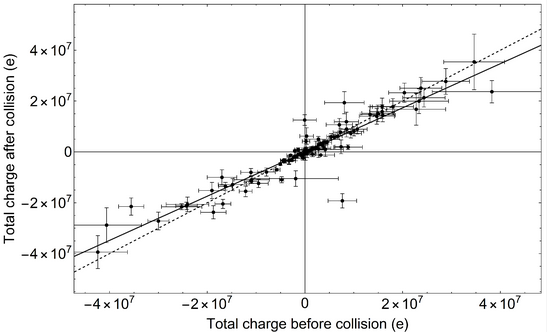Atmosphere (2023); https://doi.org/10.3390/atmos14071065
F. C. Onyeagusi, C. Meyer, J. Teiser, T. Becker, and G. Wurm
Grain collisions in aeolian events, e.g., due to saltation, result in atmospheric aerosols. They may regularly be electrically charged, but individual charge balances in collisions including small grains are not easily obtained on the ground. We therefore approach this problem in terms of microgravity, which allows for the observation of collisions and the determination of small charges. In a drop tower experiment, ∼1 mm dust aggregates are traced before and after a collision within the electric field of a plate capacitor. The sum of the electric charge of two particles (total charge) before and after the collision often strongly deviates from charge conservation. Due to the average low collision velocities of 0.2 m/s, there is no large scale fragmentation. However, we do observe small charged particles emerging from collisions. The smallest of these particles are as small as the current resolution limit of the optical system, i.e., they are at least as small as tens of µm. In the given setting, these small fragments may carry 1 nC/m2–1 µC/m2 which is between 1% and ten times the surface charge density of the large aggregates. These first experiments indicate that collisions of charged aggregates regularly shed charged grains into the atmosphere, likely down to the suspendable aerosol size.

Total charge on two solid basalt spheres before and after a collision. The solid line is a linear approximation of the data. The dashed line visualizes charge conservation. The basalt bead systems tend to lose charge after a collision.

